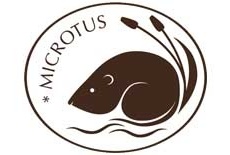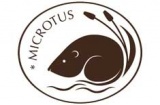Conservation of root vole - LIFE08 NAT/SK/000239
The intensification of agricultural production, forestry and water streams regulations during last century influenced habitat loss which evolved depending on traditional extensive management. The survival of many species that prefer grazing, mowing, reed cutting or their existence is bound to balks, patches of vegetations on the fields, linear and bank vegetation as a part of sensitively managed country is in jeopardy due to the loss of suitable habitats.
Root vole (Microtus oeconomus mehelyi) lives in such habitats. The main cause of the root vole endangerment are intensive meliorations, wetlands drying, turning meadows into fields, abandonment of traditional use of meadows and wetlands for grazing, mowing and reed cutting. The most appropriate conservation actions for its protection is to bring back the traditional way of management, meadows mowing, reed cutting, revitalization of wetlands and bank vegetation.
Coordinating beneficiary:
 Regional Association for Nature Conservation and Sustainable Development (BROZ), Slovakia
Regional Association for Nature Conservation and Sustainable Development (BROZ), Slovakia
BROZ was established as a civic association (non-profit, non-governmental organization) in Bratislava in 1997. It is active in conservation, enhancement and restoration of biodiversity, promotion of sound regional
planning and sustainable development at regional and local level and environmental education. BROZ is operating mainly in the region of south-western Slovakia. Activities are organized in seven programmes:
1. Biodiversity: promotion of NATURA 2000, conservation measures for threatened species and their habitats
2. Malé Karpaty Mts.: forest conservation and sustainable forest management, new protected areas
3. Záhorie: restoration of wetlands, promotion of nature conservation in military district, research
4. Danube: conservation and management of floodplain forests, restoration of degraded wetlands
5. Ecological Network of Bratislava: promotion of ecological networks and environmentally sound urban planning
6. Green Lungs of Bratislava: improvement of existing green areas, tree planting, promotion of „urban biodiversity“
7. Wetland restoration: restoration of degraded wetlands, publicity campaigns, environmental education
Project partners:
 Water Research Institute (VÚVH), Slovakia
Water Research Institute (VÚVH), Slovakia
VUVH was established in 1951. It is contributory organization of Ministry of Environment of the Slovak Republic. It is the only institution in Slovakia providing the complex water management research and other related activities resulting from the needs of water management of the Slovak Republic. Basic Activity of the Institute is scientific research, expertise and development activity, professional water management consulting and dealing with water management - ecological problems.
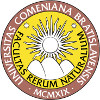 Commenius University, Faculty of Natural Sciences (PriF UK), Slovakia
Commenius University, Faculty of Natural Sciences (PriF UK), Slovakia
Univerzita Komenského v Bratislave, Prírodovedecká fakulta (Comenius University in Bratislava, Faculty of Natural Sciences) was established on 3rd July 1940. The main mission of the faculty is free realization of scientific, educational and cultural activities. The faculty develops nature sciences and teaching of nature science academic subjects. The main subject of activities is realization of basic and applied scientific research.
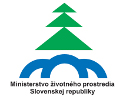 Slovak Ministry of Environment (MŽP SR), Slovakia
Slovak Ministry of Environment (MŽP SR), Slovakia
Ministry of Environment of Slovak Republic) is the central state authority for environment, including:
a) nature and landscape conservation;
b) water management, flood protection, water quality and quantity protection, rational use of water, fishery;
c) protection of air, athmosphere, ozone layer and climatic system of the Earth;
d) ecological aspects of territory planning;
e) waste management;
f) environment impact assesment;
g) implementation of unified information system on environment and monitoring;
h) geological reserch and exploration;
i) protection and regulation of the trade with endangered free living plant and animal species;
j) geneticaly modified organisms
 Trout Circle Association (Pisztráng Kör),Hungary
Trout Circle Association (Pisztráng Kör),Hungary
Trout Circle Association aim is raising public awareness on the field of Nature protection. They work in close relationship with schools, universities, forestry, water management authorities to introduce and protect Szigetköz natural habitats. They run a research and educational field center in Dunasziget. They made several interactive exhibitions in the past years with the topic of Danube, Water, and the development of landscape.
 Society for the Study and Conservation of Mammals (VZZ), Holandsko
Society for the Study and Conservation of Mammals (VZZ), Holandsko
The ‘Zoogdiervereniging VZZ’ (Society for the Study and Conservation of Mammals) in the Netherlands is active in the field of science, conservation, education and raising public and professional awareness regarding mammals for over 55 years. The society gathers scientists and amateurs to work in different working groups focusing on species and species groups or on specialized themes. Gathering data on occurrence, distribution and trends of mammals through employment and coordination of an extensive network of volunteers, is one of the key activities. The experts within the society and staff are frequently consulted regarding mammal conservation issues by authorities, industries and NGO’s. The Zoogdiervereniging VZZ coordinates the species protection plan of Microtus oeconomus subsp. arenicola This is a subspecies of the root vole that is endemic to The Netherlands and is listed as a priority species in Annex II of the Habitats Directive. The Zoogdiervereniging VZZ works in the Netherlands inside the framework of a national umbrella working on all wild flora and fauna (VOFF). In developing standards from basic survey work to specialized monitoring techniques or methods for impact assessment an extensive international network has been build up.
 National Park Neusiedler See – Seewinkel (NP NSS), Austria
National Park Neusiedler See – Seewinkel (NP NSS), Austria
Nationalpark Neusiedler See – Seewinkel, the steppe national park of Austria was formed in 1993. It is covering 9.800 ha area on the Eastern side of Lake Neusiedl (Fertı), organised into 6 conservation zones. The richness of species in the region is determined in part by its location in a transitional zone, in part by its wide variety of different habitats. The main habitat types are: open water part of the lake, reed belts, silted-in areas of the lake, sand dikes, meadows, pastures, shallow pools. The main tasks of NNSS are the conservation of protected natural values by site management and species conservation, research, monitoring and nature conservation education. It has a highly educated, experienced and committed staff, as well as the necessary equipment, livestock and Education Centre. The National Park is financed by equal contribution from the Land Burgenland and the Austrian Republic.
LIFE
NATURA 2000
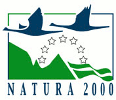 Nature and biodiversity - NATURA 2000
Nature and biodiversity - NATURA 2000

